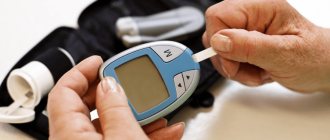1.What is blood culture?
Blood culture is a common test that can detect blood poisoning. Healthy blood is free of any bacteria or fungi.
A bacterial infection in the blood, bacteremia, can be a serious disease because... As a result, bacteria are spread to all organs. Blood poisoning occurs when other organs are seriously infected. Blood poisoning can also occur when the immune system is weakened.
Infection in the blood is determined by placing the collected material in a nutrient medium. If bacteria or fungus are present in the blood, they will begin to grow. The doctor will then be able to determine the type of infection and prescribe treatment for blood poisoning.
Why is blood culture performed?
Blood cultures are performed to:
- Detect a bacterial infection that has entered the blood from other organs;
- Detect a fungal infection in the blood;
- Select antibiotics to treat blood poisoning;
- Find the cause of the fever or shock.
Complexes with this research
Your immunity Analysis of blood system disorders, vitamin D levels and allergic reactions RUR 3,210 Composition
Female infertility Analysis of women's reproductive health status RUR 16,210 Composition
Prevention of childhood colds Examination of children aged 7+ who suffer from colds more than 4 times a year 2,170 RUR Composition
IN OTHER COMPLEXES
- Rheumatoid arthritis RUR 3,720
- Iodine deficiency RUB 1,650
- Entry into IVF RUB 23,020
- Future dad 8,460 RUR
- Joints RUR 2,620
3.What are the risks and what can interfere with sowing?
Possible risks can only be associated with the blood sampling itself for culture. In particular, the appearance of bruises at the puncture site and inflammation of a vein or artery (phlebitis). Warm compresses several times a day will relieve phlebitis. If you are taking blood thinning medications, you may bleed at the puncture site.
What can interfere with blood culture?
Reasons that may interfere with blood culture:
- If you have recently taken antibiotics;
- If the blood contains bacteria or fungi from the skin;
- If the required bacterium does not enter the blood;
- If the technique for collecting or processing blood is not followed.
As a result of the above, a false positive or false negative result is possible.
What's worth knowing?
Some bacteria enter the bloodstream if there is an infection of the kidneys, lungs, or other organs. This, however, does not mean that the blood is also contaminated. About 5% of blood contains common skin bacteria. If they start to multiply on a blood culture, experts may take it as a positive result. However, a blood infection may be caused by bacteria other than these bacteria. Therefore, several blood samples are required for culture. On the other hand, there is always the possibility that even when blood is taken at different times and from different places, the infectious bacteria will not be included in the sample.
GEMOCULTURE
Hemoculture
(Greek haima blood + lat. cultura cultivation) - a culture of microorganisms isolated from blood. The term “hemoculture” is usually used to define cultures of bacteria, spirochetes and fungi, for the isolation of which a bacteriological blood test is used.
For a number of infectious diseases, hemoculture isolation has important diagnostic value and can serve as a control for the effectiveness of treatment or be used for the preparation of autovaccines. For diagnostic purposes, bacteriological blood testing is carried out not only for clinical symptoms of diseases in which bacteremia is an important stage of pathogenesis (typhoid fever, brucellosis, leptospirosis), but also in febrile patients in cases with an unclear clinical picture. Blood for research is taken aseptically using venipuncture and inoculated onto nutrient media. The grown microorganisms are isolated in pure culture and identified. The likelihood of isolating a blood culture depends on the number of bacteria in the blood; it increases with the volume of blood taken for inoculation (usually 10 ml, but not less than 5 ml). To reduce the bactericidal properties (see) of blood, it is necessary to dilute it at least 10 times in a liquid nutrient medium. The best results are obtained by culturing blood immediately after collection; For short-term storage, anticoagulants are used - heparin, dextran sulfate, sodium citrate. Defibrinating the blood by shaking with glass beads before culture is not used, since it removes most of the bacteria present in the blood. Clotted blood should be inoculated with the clot after it has been crushed. The choice of culture media for blood inoculation depends on the properties of the suspected pathogen. If there is no indication of the type of microorganism, inoculation is carried out on media that ensure the growth of all possible pathogens. Accelerated methods for isolating blood have been proposed. Blood plasma or a nutrient medium in which blood is diluted is filtered through membrane filters after sedimentation of the formed elements. These filters are placed on the surface of a dense nutrient medium and, after cultivation, the colonies grown on the filter are examined. The advantage of the method, in addition to speed, is also the possibility of quantitative assessment of bacteremia (see).
Isolation of the causative agents of typhoid fever, Leptospira, and Brucella from the blood of a patient is most often tantamount to making a diagnosis of the corresponding disease. In the atypical clinical course of these diseases, G.'s isolation is essentially the only method of early diagnosis. The etiological role of pathogens of septic diseases isolated from the blood in some cases requires additional evidence, which includes repeated isolation of the same microbe, detection of immunological changes in the patient in relation to the isolated culture, determined by test tube reactions and allergy tests. The study of the sensitivity of the isolated culture to antibiotics is taken into account when prescribing antibacterial therapy. G. of a number of opportunistic microorganisms can often be isolated after catheterizations, removal of septic dental lesions, and tonsillectomies. In patients with congenital or acquired immunological deficiency (agammaglobulinemia, lymphopenia, leukemia, radiation sickness, severe infectious diseases), as well as with burn disease, bacteremia is often detected as a consequence of a violation of the barrier functions of the skin and mucous membranes and a weakening of the bactericidal blood systems, which reflects the severity of the underlying diseases. In view of the constant danger of developing sepsis in such patients (see), the question of the diagnostic value of isolated G. is decided in each case, taking into account the clinical picture and laboratory data.
In typhoid fever, in some cases, blood culture is isolated already at the end of the incubation period, and in the first days of the disease and during relapses - in approximately 100% of cases. With other salmonellosis, G. is sown with less constancy and only at the height of the febrile period.
For brucellosis, it is recommended to take blood during a febrile period, but G.’s isolation is possible at normal temperatures.
In patients with leptospirosis, sowing of G. is possible during the first week of the disease, most often in the first 3 days.
If sepsis is suspected, it is rational to inoculate on media that ensure the growth of all the most commonly isolated microorganisms (staphylococci, streptococci, enterobacteria, anaerobes, etc.). To isolate G., universal semi-liquid media prepared from hydrolysates of animal or plant proteins with the addition of reducing agents (sodium thioglycolate, cystine) are successfully used. Most bacterial cultures, including anaerobes, grow well when blood is inoculated on Kitt-Tarozzi medium. The use of sugar, whey, and Levinthal broth is also recommended. Adding 0.1 - 0.2% agar to the media improves bacterial growth.
To isolate bacterial L-forms, inoculation is carried out on hypertonic stabilizing media with sucrose, sodium chloride, magnesium sulfate and serum. Isolation of viruses from blood - see Viremia, Virological studies.
Bibliography:
Guide to microbiological diagnosis of infectious diseases, ed. K. I. Matveeva, M., 1973; Handbook of microbiological and virological research methods, ed. M. O. Birger, M., 1973; Timakov V.D. Medical microbiology. M., 1974; Diagnostic procedures and reagents, techniques for the laboratory diagnosis and control of the communicable diseases, NY, 1963; Finegold SM ao Rapid diagnosis of bacteremia, Appl. Microbiol., v. 18, p. 458, 1969; Kozub WR ao A practical blood culturing method employing dilution and filtration, Amer. J. clin. Path., v. 52, p. 105, 1969; Washington JA Evaluation of two commercially available media for detection of bacteremia, Appl. Microbiol., v. 23, p. 956, 1972.
S. S. Belokrysenko.
Blood acid imbalance
Acid-base balance is an important parameter that is maintained in human blood within certain limits. This is necessary for the normal functioning of various body systems, the occurrence of biochemical reactions, and the optimal functioning of enzymes.
Acids are substances that can give off hydrogen ions, and bases (alkalis) are substances that attach these ions. The acidity and alkalinity of solutions is assessed on a pH scale from 0 (solutions of strong acids) to 14 (solutions of strong alkalis). On the pH scale, neutral acidity is 7.
Normal blood acidity is 7.35 – 7.45 on the pH scale. A shift of this indicator below 7.35 indicates acidosis (a shift in the acid-base balance of the blood towards increasing acidity). When the pH deviates above 7.45, alkalosis occurs (excess of substances with alkali properties in the blood).
During the process of metabolism in the body, products are formed in large quantities that can cause a change in this parameter. The main role in the regulation of acid-base balance belongs to the lungs, kidneys and blood buffer systems.
During breathing, carbon dioxide is released through the lungs, which is formed during the metabolic process in the body. Carbon dioxide, when combined with water, forms carbon dioxide, therefore, if there is an excess of it in the blood, acidosis develops, and if the concentration of carbon dioxide is insufficient, alkalosis occurs.
The kidneys remove excess acids and alkalis from the body with urine. At the same time, these organs, within certain limits, can regulate the amount of acids and bases released and absorbed back, due to which the pH level in the blood is regulated.
Blood buffer systems are solutions of weak acids and alkalis, which combine with excess amounts of acids or bases (depending on the presence of acidosis or alkalosis) to neutralize them, thereby equalizing the pH level.
The cause of acidosis and alkalosis in most cases is the severe course of the underlying disease, in which the resulting changes in blood pH exceed the capabilities of the mechanisms regulating this parameter.
Synonyms Russian
Disorders of the acid-base balance of the blood, disturbances of acid-base homeostasis.
English synonyms
Acid-Base Disorders, Acid-Base Homeostasis.
Symptoms
Manifestations of acidosis and alkalosis are often masked by manifestations of the underlying disease, which caused a change in the acid-base balance of the blood.
Acidosis may have the following symptoms:
- nausea, vomiting
- increased breathing rate
- headache
- disturbance of consciousness (up to coma)
- drop in blood pressure (in severe forms of acidosis)
- heart rhythm disturbances.
Manifestations of alkalosis may include:
- headache
- dizziness
- depression of consciousness (up to coma)
- cramps in various muscle groups
- heart rhythm disturbances
General information about the disease
The acid-base balance in the blood is a vital parameter, the normal values of which are 7.35 - 7.45 on the pH scale.
A pH deviation below 7.35 indicates acidosis. When the pH shifts above 7.45, alkalosis occurs.
Depending on the causes of development, acidosis and alkalosis are divided into metabolic (metabolic) and respiratory (breathing).
Respiratory acidosis develops as a result of the accumulation of large amounts of carbon dioxide in the blood, which combines with water to form carbon dioxide. This causes an increase in blood acidity. This condition can develop with breathing disorders that cause decreased pulmonary ventilation.
This may be the result of lung diseases (for example, bronchial asthma), damage to the nervous system (for example, with brain injuries), diseases, muscles and nerves that lead to loss of the ability to make effective breathing movements (for example, with amyotrophic lateral sclerosis).
The opposite condition is respiratory alkalosis, which occurs when the lungs remove excess carbon dioxide from the body. The mechanism for the development of this type of alkalosis is based on an increase in the rhythm and depth of breathing.
Such breathing disorders can occur in the presence of pathology from various organs and systems (for example, injuries, brain tumors, lung diseases, cardiovascular failure).
Metabolic acidosis can develop for the following reasons:
- increased production of acids in the body. An increase in acid production in the body can be observed in conditions accompanied by metabolic disorders. For example, in diabetes mellitus, the use of glucose by cells is impaired due to a lack of the hormone insulin.
At the same time, the body begins to produce energy not from glucose, but from fats - an alternative way to obtain energy. The breakdown of fats in the liver is accompanied by the formation of large quantities of ketone acids, which leads to acidosis.
- impaired renal function. The kidneys play an important role in regulating the acid-base balance in the blood. In case of kidney diseases that lead to disruption of their functions, the processes of acid secretion and absorption of substances with an alkaline reaction may be disrupted, which can cause acidosis.
- loss of large quantities of alkalis with digestive juices. This condition can be observed with severe diarrhea, surgical interventions on the intestines.
- poisoning with poisons and toxic substances. The breakdown of these substances in the body can occur with the formation of large amounts of acids, which can cause acidosis.
The main causes of metabolic alkalosis are the following:
- loss of large amounts of acidic gastric contents. It can be observed with profuse vomiting, aspiration of stomach contents using a special probe.
- use of diuretics
- increased excretion of hydrogen ions by the kidneys. Such processes can be observed with an excess of the adrenal hormone aldosterone. Aldosterone is involved in the regulation of water and electrolyte balance in the body. An increase in its level can occur both in diseases of the adrenal glands and in pathologies of other organs (for example, heart failure).
Thus, the development of acidosis or alkalosis is often associated with the occurrence of pathological processes in which the resulting changes in acid-base balance exceed the compensatory capabilities of the body. In this case, an important role in treatment is played by the normalization of the patient’s condition for the underlying disease that caused the deviation in blood pH.
Who is at risk?
The risk group for developing acid-base balance disorders in the blood includes:
- persons suffering from lung diseases (for example, bronchial asthma)
- persons with kidney disease with impaired kidney function
- persons suffering from diabetes mellitus
- persons with damage to the nervous system (for example, brain injuries, strokes)
- persons who have suffered large losses of gastrointestinal contents (for example, with excessive vomiting, frequent loose stools)
- persons taking certain medications (eg, diuretics, aspirin)
- persons who abuse alcohol.
Diagnostics
Laboratory research methods play an important role in diagnosis, which allows one to establish the blood pH level, its gas composition, parameters of water-electrolyte metabolism and other vital indicators, monitoring and correction of which are necessary for these conditions.
Laboratory research:
- Determination of blood pH, blood gas composition. Determination of these parameters can be carried out using special devices - gas analyzers. The material for the study is arterial blood.
- General blood analysis. This analysis allows you to evaluate the main characteristics of blood composition: the number of red blood cells, hemoglobin, leukocytes, platelets. This study is not specific for diagnosing acidosis or alkalosis, but is necessary to identify the causes of changes in blood pH.
- General urine analysis with microscopy. This analysis shows the basic physicochemical properties of urine, its pH level, and the presence of pathological and physiological metabolic products.
- Glucose in blood plasma. Glucose is the main source of energy in the human body. An increase in blood glucose levels is observed in diabetes mellitus. Metabolic disorders that occur with this disease can lead to the development of acidosis.
- Potassium, sodium, chlorine in serum. Potassium, sodium, and chlorine are the main electrolytes in the human body that perform many functions. Among them are participation in the transport of substances into the cell and the removal of metabolic products from it, maintaining water and acid-base balance in the body.
- Alanine aminotransferase (ALT). Alanine aminotransferase is an enzyme found in many cells of the body. Most of it is concentrated in the liver. When the liver is damaged, the level of this enzyme in the blood increases. Impaired liver function can lead to changes in the acid-base balance in the blood.
- Creatinine and urea in blood serum. Creatinine and urea are the end products of protein metabolism in the human body. They are excreted from the body by the kidneys. If kidney function is impaired, an increase in these indicators may be observed. Kidney damage can lead to changes in the acid-base balance in the body.
Depending on the specific clinical situation, other laboratory tests may be required to identify the causes of acidosis or alkalosis (for example, determining the level of ketone bodies in the blood and urine, the concentration of lactate in the blood, etc.).
Research:
- Radiography. Chest x-rays can detect pathological changes in the lungs (for example, pneumonia) that result in changes in the rhythm and depth of breathing.
- Ultrasound examination (ultrasound). The method is based on the properties of ultrasound. Using ultrasound, you can visualize internal organs, identify changes in their structure, the presence of space-occupying formations (for example, cysts, tumors), which may be necessary to determine the causes of disturbances in the acid-base balance in the blood.
- Computed tomography (CT). The method allows you to obtain layer-by-layer
highly informative images of internal organs. This is of great importance for identifying the disease that caused acidosis or alkalosis (for example, respiratory failure resulting from cerebral hemorrhage).
Treatment
Treatment of disorders of the acid-base balance in the blood is aimed at treating the underlying disease that led to the development of acidosis or alkalosis. To normalize the pH level, intravenous administration of solutions that neutralize acids (for acidosis) or alkalis (for alkalosis) can be carried out.
Treatment of respiratory acidosis is aimed at restoring the rhythm and depth of breathing with the possible transfer of the patient to artificial ventilation (breathing using a special apparatus in cases of ineffective lung function).
For respiratory alkalosis, inhalation of air mixtures containing carbon dioxide can be used.
Prevention
There is no specific prevention of changes in the acid-base balance in the blood. Patients suffering from diseases that can cause changes in blood pH (for example, diabetes) should strictly follow the recommendations of their doctor and undergo regular examinations and treatment.
Recommended tests
- Blood pH determination
- Determination of blood gas composition
- General blood analysis
- General urine analysis with microscopy
- Blood plasma glucose
- Potassium, sodium, chlorine in serum
- Alanine aminotransferase (ALT)
- Serum creatinine
- Urea in serum







